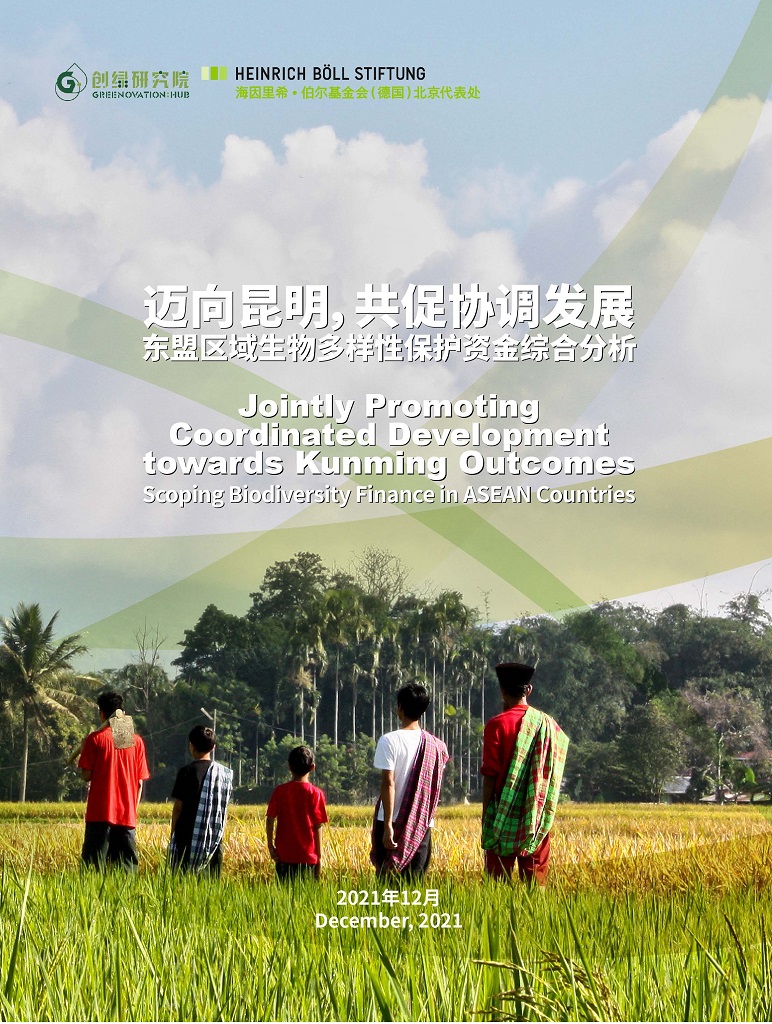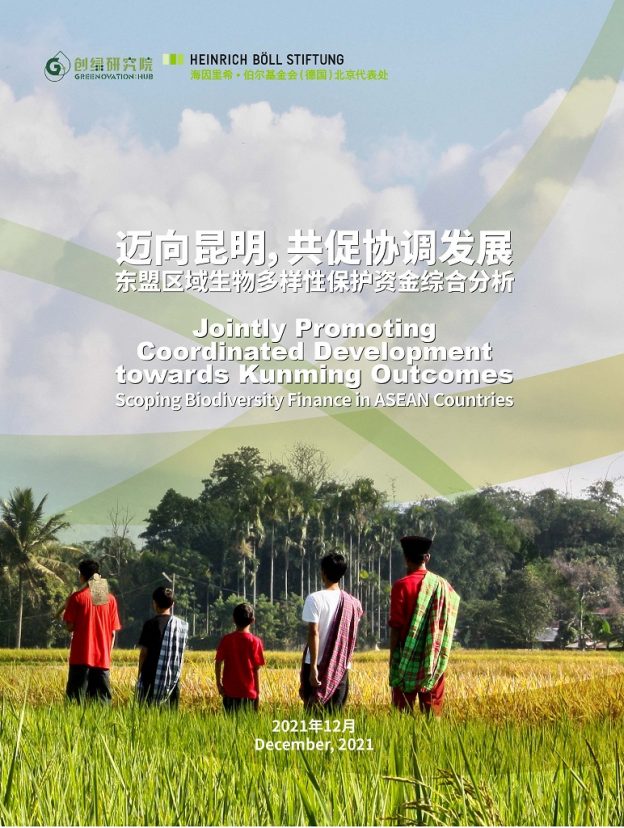
The year 2021 marks the 30th anniversary of China-ASEAN Dialogue Relations and witnesses the cooperation between China and ASEAN in sustainable development. At the special summit to commemorate the 30th anniversary of China-ASEAN Dialogue Relations held on November 22, 2021, President XI Jinping announced the establishment of a China-ASEAN Comprehensive Strategic Partnership, and pointed out that China is ready to open a dialogue with ASEAN on climate response, policy communication and experience-sharing, and jointly work out plans for sustainable development. China is ready to launch the Action Plan on China-ASEAN Green Agriculture to make agricultural sector more resilient and sustainable. China may also energize the China-ASEAN Countries Joint Research and Development Centre of Marine Science and Technology, build the Partnership on Blue Economy, and promote marine sustainable development. In recent years, the mechanism for cooperation between China and ASEAN in ecology and environment has been well established with enriched content in diversified forms. Outcomes have been achieved in environmental policy dialogue and information-sharing, biodiversity protection, environment-friendly industry and technology exchange, as well as capacity building in environmental management. The Kunming Declaration adopted at the first part of the 15th meeting of the Conference of the Parties to the UN Convention on Biological Diversity (COP15) that kicked off in Kunming on October 2021 brought together the global forces of biodiversity governance and laid a solid foundation for an ambitious, realistic and balanced “Post-2020 Global Biodiversity Framework” at the second phase of the conference.
ASEAN, as one of the regions with the most biodiversity worldwide and the highest value of ecosystems in forest, agriculture, wetland, ocean, owns diverse types of rare species, native species and ecosystems. In recent years, however, ASEAN has faced severe challenges in biodiversity conservation, such as ongoing forest degradation, serious wildlife smuggling, imminent risk of endangerment and extinction of some wildlife and agricultural biological species, pollution of wetlands and marine ecosystems, and overfishing, etc. The service value of its key ecosystems has also declined year after year. Moreover, climate changes and invasive species also cast a negative impact on its biodiversity. ASEAN, mainly composed of developing countries, is seriously challenged with the prominent dilemma between development and protection. Despite positive progress has been made in biodiversity conservation, ASEAN countries still face many bottlenecks, such as lack of funding, inadequate awareness of biodiversity conservation, lack of synergy, insufficient technological and professional knowledge, etc, among which the lack of funding stands out prominently. Except Singapore, other nine ASEAN countries all suffered from a funding gap for biodiversity conservation.
This report aims to provide relevant stakeholders with recommendations and directions for investment in the biodiversity conservation of ASEAN by examining the financing mechanism of ASEAN and analyzing the difficulties. Besides, this report primarily focuses on the role that China can play and give recommendations for further collaboration.
Source of funding for biodiversity conservation in ASEAN countries
In ASEAN countries, the biodiversity conservation is mainly financed through government budget, official development assistance and contributions from enterprises, NGOs and individuals. More than half of the biodiversity finance comes from government budget (central and local governments) and official development assistance. Among them, the project funding from Global Environment Fund and Asian Development Bank are the most representative multilateral assistance. Compared with public sector, private sector and social sector have much less engagement, especially in Indonesia, Malaysia, Thailand and Vietnam where biodiversity are quite rich.
In public sector, the biodiversity finance of ASEAN governments mainly comes from tax revenue, fees and charges, conservation funds, revenue of eco-tourism and sustainable industries. The official development assistance of developed countries and international organizations to ASEAN countries are also an important source of biodiversity finance. For example, both Japan International Cooperation Agency (JICA) and German Corporation for International Cooperation (GIZ) have carried out ecological protection projects in ASEAN countries. Relevant UN agencies, World Bank, Asian Development Bank, International Monetary Fund and other organizations have also provided biodiversity finance to ASEAN countries via loan, authorized funds and small grants. The Core Environment Program and Biodiversity Conservation Corridors Initiative in the Greater Mekong Sub-region (CEP-BCI) , initiated by the Asian Development Bank and jointly facilitated by China and five ASEAN countries, has already completed the Phase III project, which promotes the mainstreaming process of biodiversity conservation and is of great significance to biodiversity cross-border corridor in the Greater Mekong Sub-region.
Enterprises, NGOs and individuals also provide certain funds and other support to biodiversity conservation in ASEAN countries. Enterprises donate to environmental and nature conservation projects through their corporate social responsibility (CSR) projects, and finance environmental protection via payment of performance bonds. Meanwhile, some ASEAN countries also offer tax incentives to enterprises which finance biodiversity conservation. Lots of NGOs have also actively engaged in the biodiversity conservation of ASEAN countries, including international ones like International Union for Conservation of Nature (IUCN), World Wild Fund for Nature (WWF), Wildlife Conservation Society (WCS), as well as considerable regional and local NGOs, which facilitate the governments to revise policies by mobilizing available resources and engaging multiple stakeholders.
In recent years, ASEAN countries, including Vietnam, Philippines and Cambodia, have begun to explore new financing tools for biodiversity conservation, including the Payment for Ecosystem Services (PES). In 2010, Vietnam issued the Decree No.99 on Payment for Forest Environmental Services (PFES), as well as the guidelines and regulations on payment for water resources. Philippines taxes hydro-power stations at 1% of the power generation income which will be in turn used for rural development and biodiversity conservation in the basin. Cambodia also launched the community-based agricultural environment payment project to provide consumers with environment-friendly certified rice.
Vietnam is similar to China in development stage and model, and shares many commonalities in the ecosystem. Thus, this report takes Vietnam as an example to further analyze its biodiversity financing mechanism. Vietnam, as one ASEAN country with the richest biodiversity, has formulated the biodiversity finance policy framework based on laws, regulations, government policies, development plans and government budgets. It has set up relatively complete financial mechanism in public, private and social sectors. However, Vietnam is still lack of fund for biodiversity conservation, which is mainly composed of public funds from the government, including government tax, fees and charges, bilateral and multilateral official development assistance, etc. Meanwhile, Vietnam also dedicates to developing multiple investment and financing mechanisms, such as the Payment for Forest Environmental Services, (PFES), Reduced Emissions from Deforestation and Forest Degradation (REDD), Clean Development Mechanism (CDM), etc. At the national level, the Vietnam’s Constitution requires protecting biodiversity and emphasizes the significance of effective management of natural resources. The Law on Environment Protection, The Law on Biodiversity , The Law on Forest Protection and Development , The Law on Fishery , The Law on Tourism and other laws and regulations provide a legal basis for biodiversity financing. Besides, Vietnam also established the forest protection and development fund, environmental protection fund, etc., and attracting funding from the public sector, private sector, NGOs and international community for biodiversity conservation by a government-led way. Enterprises and NGOs also finance natural reserves and ecosystem related projects, yet Vietnam’s biodiversity finance still faces challenges. From 2011 to 2015, its average biodiversity spending only accounted for 0.16% and 0.58% of its GDP and government budget, respectively. The government spending on biodiversity is far below the contribution of biodiversity and environment to its economy. The official development assistance has also declined gradually since Vietnam became a middle-income country in 2010, among which, the biodiversity related official development assistance only accounted for about 4.7%. Other stakeholders contribute little to biodiversity conservation for their inadequate awareness of the significance of biodiversity conservation.
China is a close neighbor, as well as an important investment and trade partner of ASEAN countries. In outbound investment and trade, Chinese government requires Chinese enterprises to strictly abide by the environmental requirements of host countries and protect local biodiversity, especially in timber import and export, transportation infrastructure and hydro-power projects. Biodiversity collaboration is also a key task in intergovernmental environmental protection cooperation between China and ASEAN countries. All previous China-ASEAN environmental protection plans have listed biodiversity conservation as one of the priorities in environmental cooperation. The China-ASEAN Environmental Cooperation Strategy and Action Framework (2021-2025) also sets forth relevant policies on biodiversity conservation. Yunnan and Guangxi, two Chinese provinces adjacent to ASEAN countries, collaborate with several ASEAN countries by establishing the multilateral cooperation mechanism for cross-border biodiversity conservation, launching cross-border environmental cooperation projects, capacity building and protection studies, etc. Some Chinese NGOs have also participated in the biodiversity conservation of ASEAN countries.
Finally, in order to address the issue of funding for biodiversity conservation and effectively achieve biodiversity targets in ASEAN, and further strengthen the collaboration between China and ASEAN, this report recommends as follows:
ASEAN stakeholders:
1. “Mainstream” biodiversity conservation. Actively participate in Convention on Biological Diversity, promote implementation of the commitments made in the National Biodiversity Strategy Action Plan (NBSAP), incorporate biodiversity conservation into national and regional development plans and strategies, promulgate and perfect relevant laws and policies, encourage public and private sectors to follow them, promote bilateral intergovernmental cooperation, strike a balance between biodiversity conservation and economic development, and encourage private sector to participate in biodiversity conservation.
2. Expansion of biodiversity finance source. The governments of ASEAN countries shall allocate more budget for biodiversity conservation, and separately draft a budget for biodiversity conservation, promote bilateral and multilateral development assistance of other countries and international organizations; banks and financial institutions shall establish biodiversity conservation funds and develop green financial products; enterprises shall invest in biodiversity conservation, implement supply chain monitoring, and adopt biodiversity offset when necessary; NGOs, civil society, communities and indigenous people may get engaged in biodiversity conservation through small donations, and project participation, etc.
3. Monitoring, evaluation and sharing of conservation progress. Formulate generally accepted integrated monitoring mechanism and indicators, so as to evaluate the actual progress of conservation and sustainable development and make full use of funds; establish national biodiversity conservation database to share management experience and information; promote the coordination of international, regional and national institutions (e.g., relevant UN agencies, Asian Development Bank and Asian Infrastructure Investment Bank) for information sharing and capacity building.
4. Biodiversity valuation and intensified conservation studies. Advocate accounting of natural capital, especially the biodiversity value, increase investment in financial and human capital in biodiversity conservation studies, and implement the research results of ASEAN Centre for Biodiversity (ACB); and coordinate the formulation and implementation of science-based biodiversity economic policies.
5. Facilitation of sustainable industries. Formulate administrative orders and economic policies for sustainable use, develop sustainable agricultural, forestry, fishery and tourism projects, intensify the sustainable use of natural resources, and promote involvement of “the whole society”, such as governments, international communities, enterprises, local communities and indigenous people through intergovernmental cooperation, public-private partnership, and participation of social sector to realize benefit sharing.
Chinese stakeholders:
1. Continuous exchange and collaboration between China and ASEAN countries in biodiversity conservation. Both sides shall carry out exchange and collaboration in biodiversity conservation in key fields such as wildlife, reserves, agriculture, forestry, ocean, etc. according to the China-ASEAN Environmental Cooperation Strategy and Action Framework (2021-2025), and take Kunming Biodiversity Fund as an opportunity to expand the source of biodiversity finance, support the biodiversity conservation projects and capacity building of ASEAN countries.
2. More engagement in biodiversity conservation projects of ASEAN countries. Encourage financial institutions and enterprises to actively engage in biodiversity conservation projects and sustainable agricultural, forestry and tourism projects of ASEAN countries. Use domestic and international green project taxonomy as reference, incorporate biodiversity conservation projects in the scope funded by green finance, explore sustainable biodiversity investment and financing opportunities.
3. Better biodiversity management in key industries. Financial institutions may issue detailed rules by industries, referring to the Joint Declaration of Banking Sector to Support Biodiversity Conservation, and learn from internationally accepted standards and best practices. Investment funds and related enterprises shall implement the requirements of the latest national policies, focus on the effect of their projects on biodiversity, and ensure biodiversity conservation measures more effective and operational.
4. More local cross-border biodiversity conservation cooperation. Deepen the cooperation between Yunnan Province and Guangxi Zhuang Autonomous Region and ASEAN countries in biodiversity conservation policy formulation, technical exchange, project implementation and capacity building to create a subnational model for transnational biodiversity conservation collaboration.
6. Introduction of multiple players. Deepen the collaboration between China and ASEAN countries in biodiversity studies, especially in species investigation, protect area survey and planning, and expert training, etc. Give full play to the role of NGOs in ASEAN biodiversity conservation, carry out biodiversity exchanges, implement subnational biodiversity conservation project, and strengthen capacity building.



 PDF
PDF
